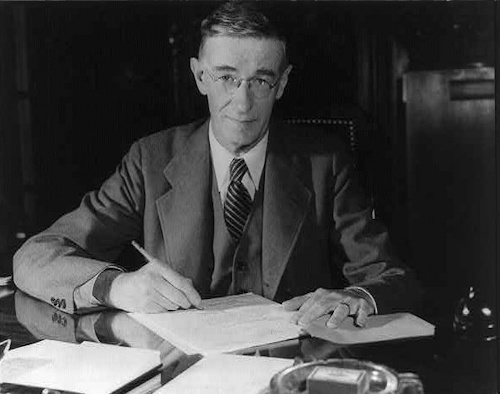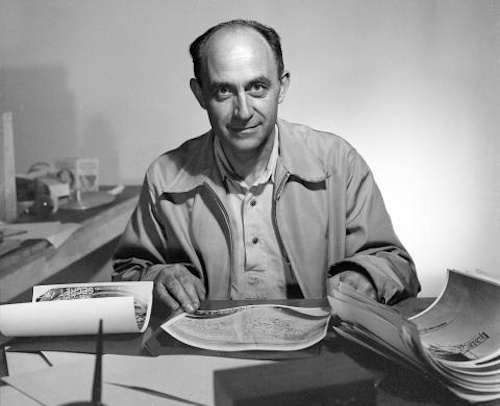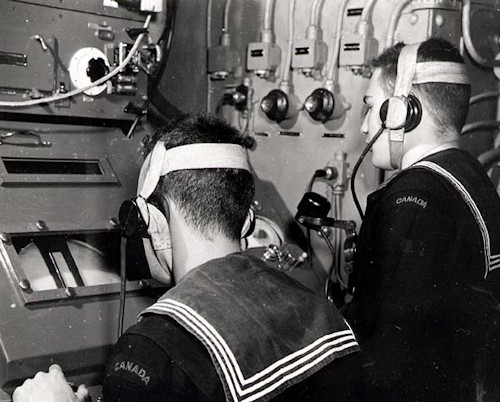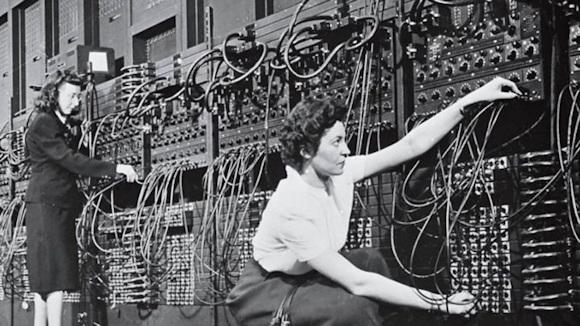War, whatever they may say, is one of the typical activities of human societies. The cruelty of war is at least as undeniable as the fact that it exerts on man a developmental thrust so strong that often after a war the world is changed (for the better?).
World War II was at the same time the greatest tragedy of humanity, at least of the XNUMXth century, and a great forge of innovation.
Let's see what happened in the main high-tech sectors ...
The RADAR, which stands for RAdio Detection And Ranging, is an acronym that has now become commonly used. It was employed in 1940 by the United States Navy.
Radar aboard Allied warships is considered one of the main reasons for the victory. However it must be said that the first patents of instruments capable of identifying a moving object were registered in the name of Christian Hulsmeuer, a German inventor who was able to estimate the distance of the object detected, was the 1904. By a twist of fate, Hulsmeyer presented his invention to the German soldiers who rejected the project, the same fate as our Guglielmo Marconi struggling with the Italian government.
Without retracing the whole history, we can however affirm with reasonable certainty that before the Second World War there were several countries that had secretly developed the technology, among these countries were the United Kingdom, Germany, France, Italy, Russia, the United States, Japan and the Netherlands, other countries would soon reach the same goal. The project for the development of the microwave RADAR, initiated by the British, will then be developed at MIT (Massachusetts Institute of Technology).
 The Computer, a machine for making calculations then evolved thanks to programming in what we know today, has had a boost from various military sectors including ballistics, atomic energy and cryptography.
The Computer, a machine for making calculations then evolved thanks to programming in what we know today, has had a boost from various military sectors including ballistics, atomic energy and cryptography.
Already in the 1927 Vannevar Bush (photo) and HW Niemann of MIT created an analog computer capable of solving differential equations, used a few years later by the UK for ballistic calculations in the military sphere. It is precisely the same Vannevar Bush who in the 1941 is appointed head of the Federal Office for Research and Scientific Development of the United States of America and, with him at the helm of innovation, the US developed several scientific projects in the years of World War II that led them to become the first world power in the scientific and military field (the two things, in principle, have always been connected!).
The main projects are related to MIT and to some selected universities and laboratories that will receive funding to carry out studies related above all to the development of war and will consolidate that tradition of attraction of the most brilliant minds of the scientific world.
At the Charles Stark Draper laboratories (engineer, founder and director of the MIT) the main studies focused on the gyroscope, inertial navigation systems and control systems.
In the same period the called project started Whirlwind, for the realization of a flight simulator requested by the US Navy, thanks to this project the development of digital computers takes off in the wake of ENIAC (opening photo), the first true digital computer created to help in the development of the atomic bomb (but he didn't arrive in time!).
 The atomic energy sector, not even talking about it, suffered a strong acceleration with the project Manhattan which recalls in the United States the main theoretical physicists (in Italy Fermi - in the photo - it was then already well known) but not only. The organizational challenges are of a dimension never faced before and for this reason all the energies of a part of the world are put in place. Scientists from all fields are called to contribute. The main armaments companies are grouped under the guidance of Du Pont (not alone ...) to manage the processes that will lead to the creation of "Little Boy" and "Fat Man". The change is epochal.
The atomic energy sector, not even talking about it, suffered a strong acceleration with the project Manhattan which recalls in the United States the main theoretical physicists (in Italy Fermi - in the photo - it was then already well known) but not only. The organizational challenges are of a dimension never faced before and for this reason all the energies of a part of the world are put in place. Scientists from all fields are called to contribute. The main armaments companies are grouped under the guidance of Du Pont (not alone ...) to manage the processes that will lead to the creation of "Little Boy" and "Fat Man". The change is epochal.
The project Manhattan it is very likely one of humanity's greatest projects ever developed, not only from the scientific point of view but also from the "influence" point of view. In fact, even today atomic energy still has its strategic implications throughout the world, through its economic and military aspects.
Science has shown that there are hidden forces in nature that can be harnessed to the use and consumption of Man and not only for the construction of explosive devices, projects for the use of atomic energy for civil uses take flight under control very close to the holders of knowledge and very few companies able to put on the field billion-dollar and multi-year projects.
SONAR (SOund NAvigation Ranging) is not a World War II invention. The great Italian genius Leonardo da Vinci had the idea of using a tube inserted into the water to be used to detect the approach of boats, it was the passive SONAR technique, based on listening to the sound vibrations transmitted by the water.
 Naturally the increasing use of submarines during the war gave a considerable boost to the study of the active SONAR, based on the sending of sound waves and the related response by reflection. The main developments took place, once again, in the USA starting with the British project ASDIC (Anti Submarine Division) whose technology was transferred to America to be developed together with the Allies.
Naturally the increasing use of submarines during the war gave a considerable boost to the study of the active SONAR, based on the sending of sound waves and the related response by reflection. The main developments took place, once again, in the USA starting with the British project ASDIC (Anti Submarine Division) whose technology was transferred to America to be developed together with the Allies.
War has always had an "informative" side and in the middle of World War II the importance of information is underlined by advances in coding techniques using encryption algorithms.
Alan Turing is perhaps one of the best known in the world to have succeeded, with the help of a machine of his invention (called Bomb) of which we have spoken on several occasions, to decipher the code used by the Enigma cipher and its variants, cipher used by the Germans. The ability to read one's opponent's messages is clearly a huge strategic advantage and employed with intelligence has undoubtedly contributed to the Allied victory.
But Alan Turing was a logician and mathematician and his thinking is at the basis of numerous developments, not only in the field of the cipher but more generally in the development of algorithms, computers and Artificial Intelligence. Of course, if we have to decrypt the signals, we must first collect them, so SIGINT has had a great importance and has developed accordingly, stimulating in turn techniques for storing the collected signals.
Transmission systems. In a modern army as we have seen, information is the lion's share, but only if it can be transmitted safely, quickly and with a low error rate can make the difference. This means that the transmissions became important and the subject of research and development.
We are talking about about 80 years ago, when cable voice transmission was used in telephone lines and signals traveled in telegraph lines. One of the war improvements introduced by the Germans had to do with cables. In particular they introduced a multi-pair cable capable of conveying four phone calls at a time, resistant, easy to spread and able to operate remotely. Field telephones were widely used, either point-to-point or via field switchboards. Even the radios had begun to have a certain importance both tactically and strategically.
The growth of military aviation and the development of radar have supported the development of more advanced anti-aircraft weapons, guided missiles, submarines… but that's another story!
To learn more:
- https://duotechservices.com/chain-home-radar-saved-london-in-battle-britain
- https://www.gadgette.com/2016/03/29/women-in-tech-history-eniac-and-the-...
- https://www.atomicheritage.org/article/chicago-pile-1-ushering-atomic-age
- http://jproc.ca/haida/sontec.html
- https://www.britannica.com/technology/military-communication/World-War-I...
- http://www.difesaonline.it/evidenza/cyber/quantum-computing-e-crittografia
Photo: web












